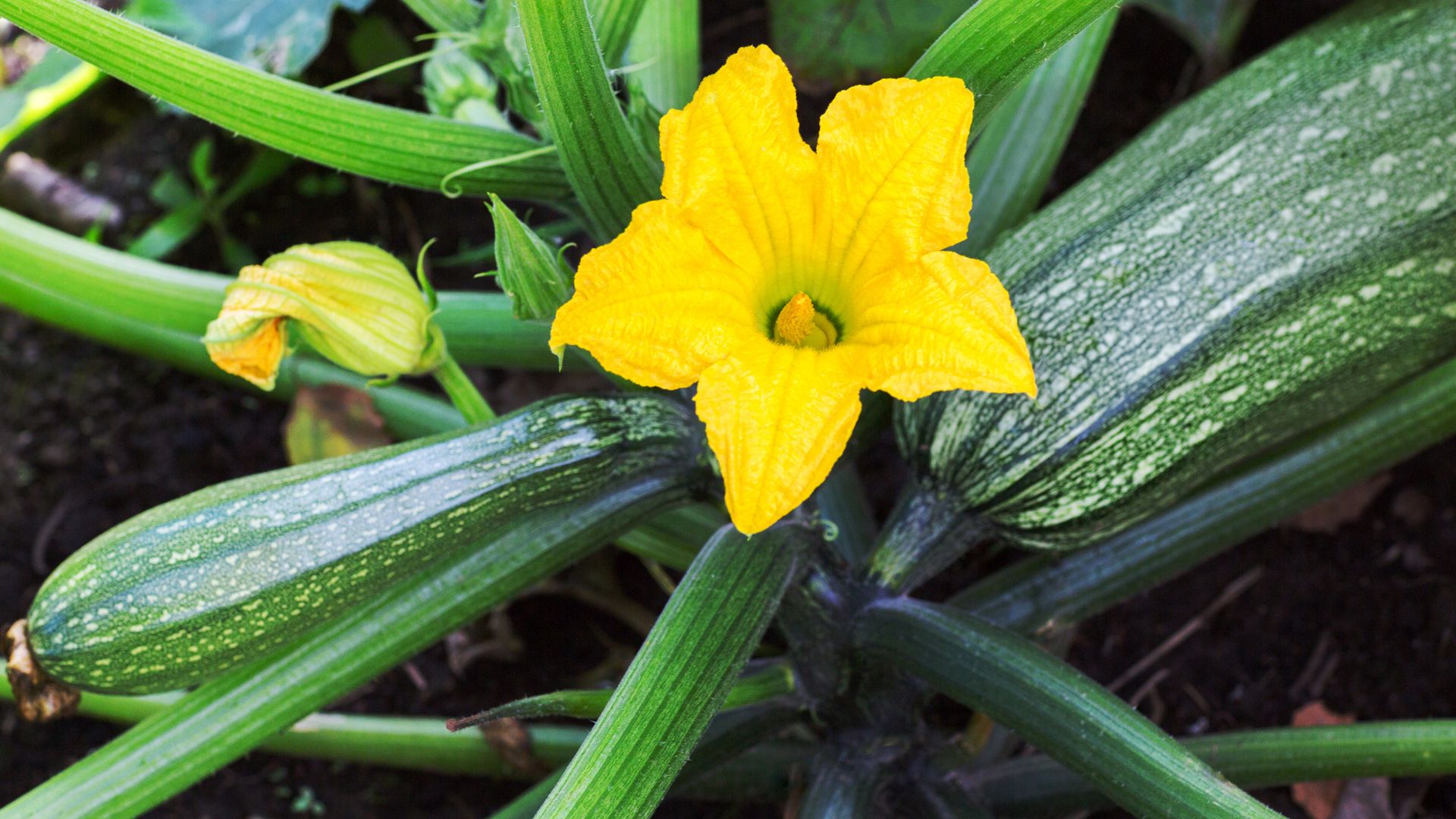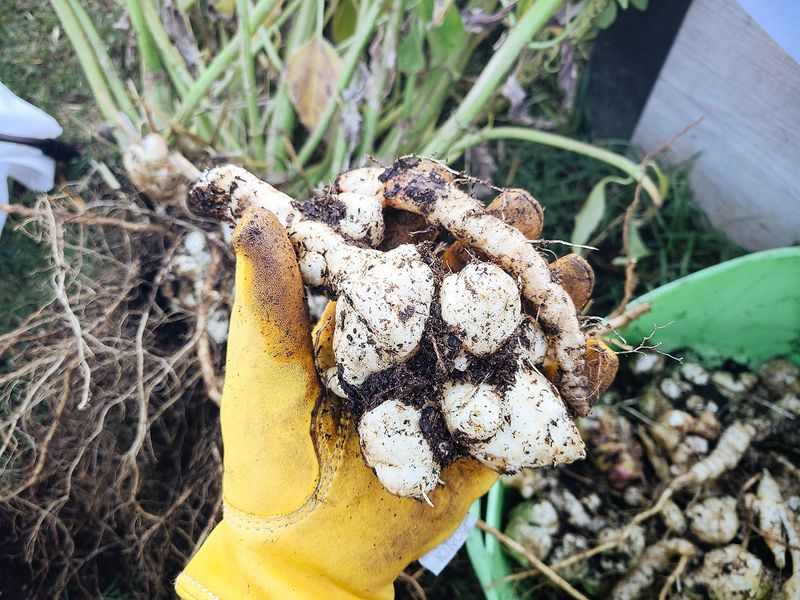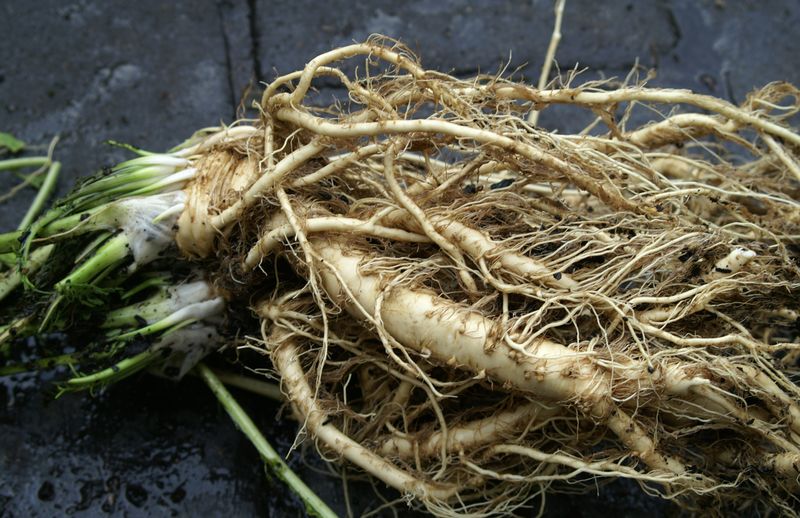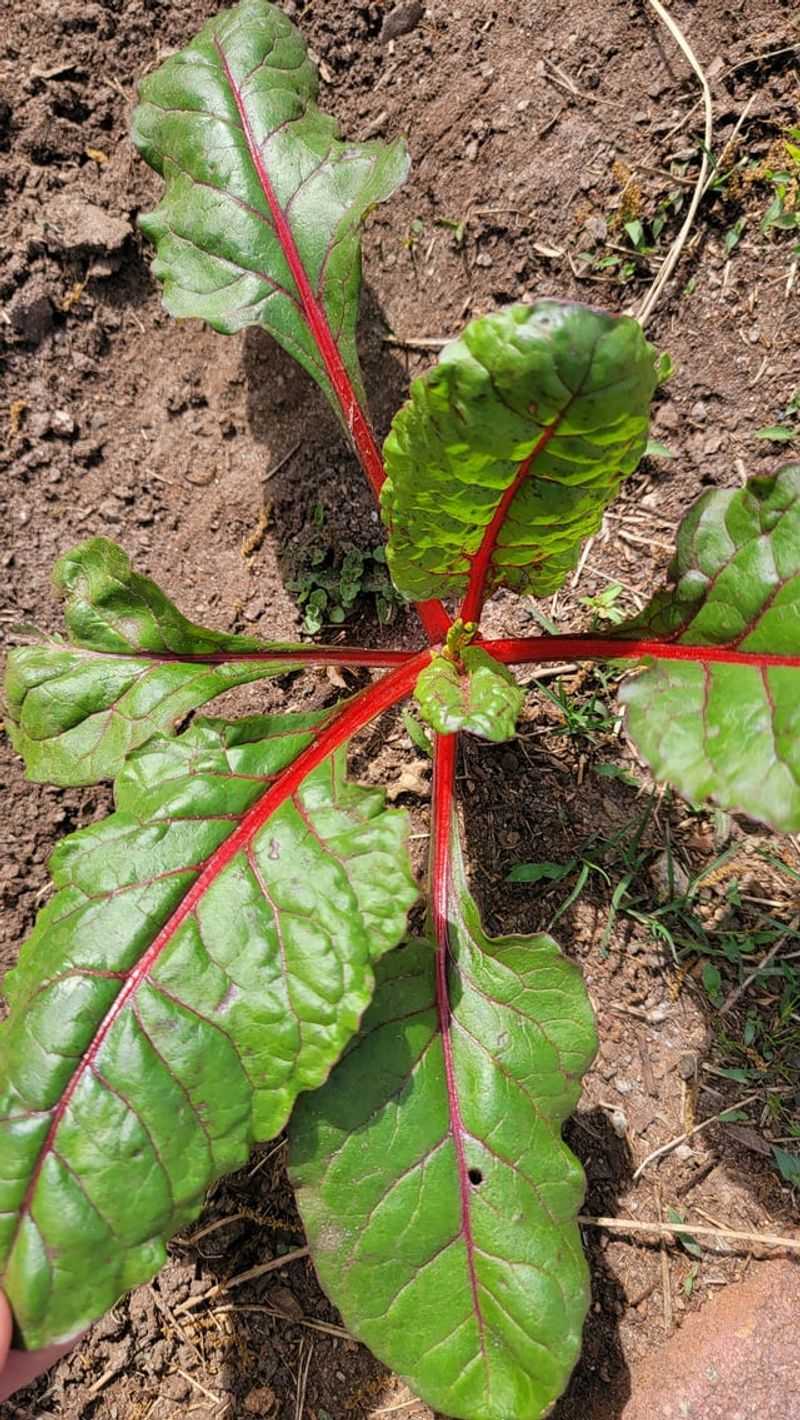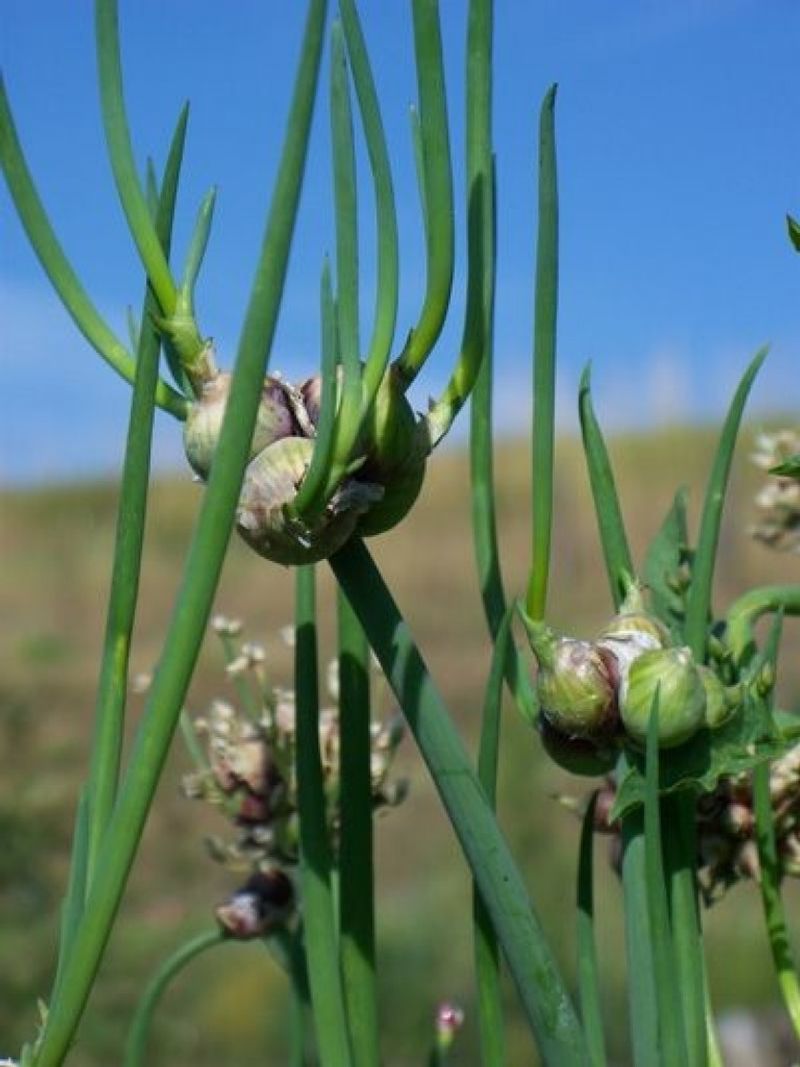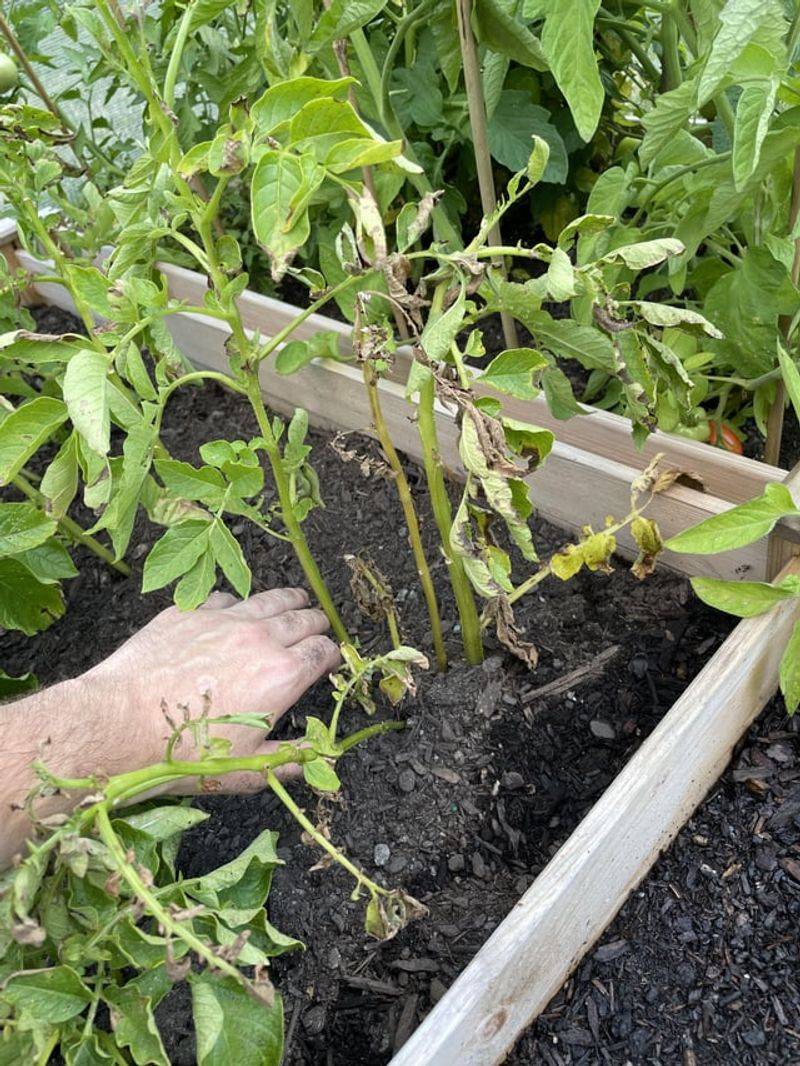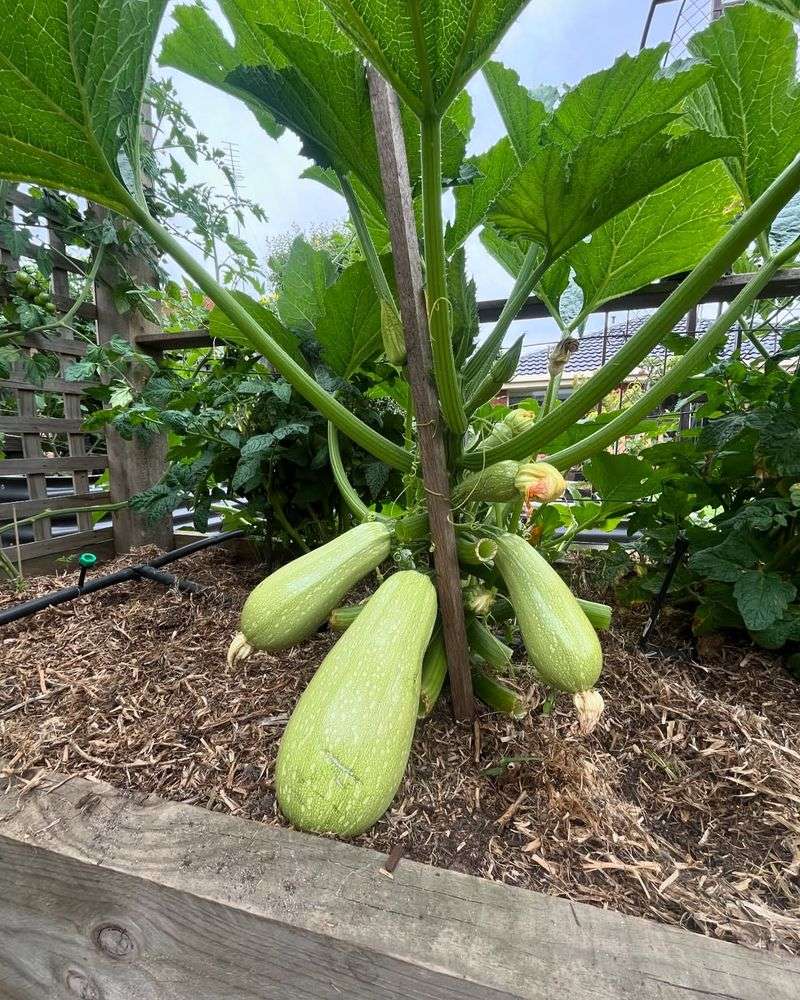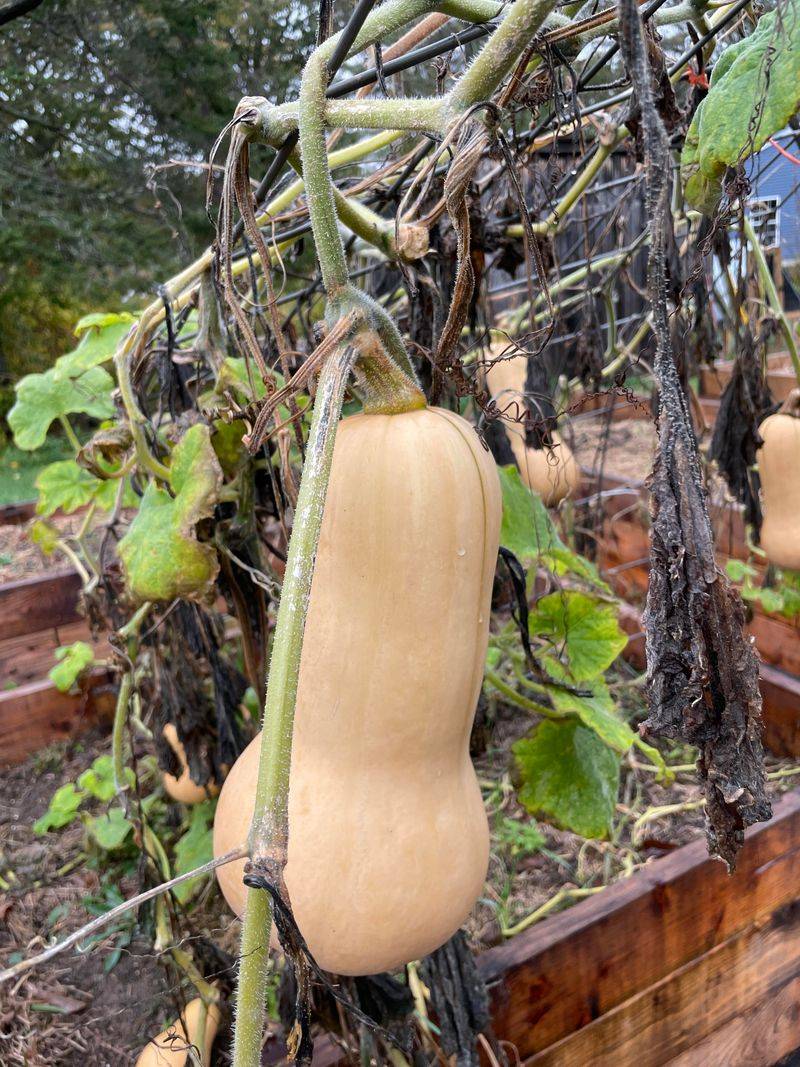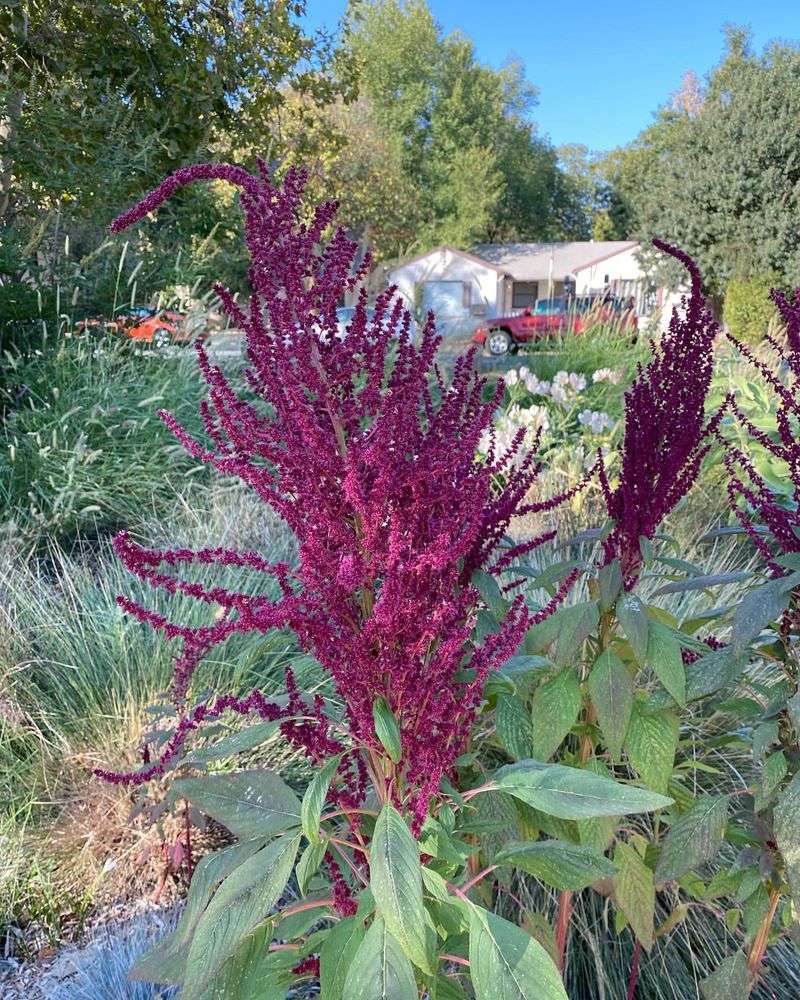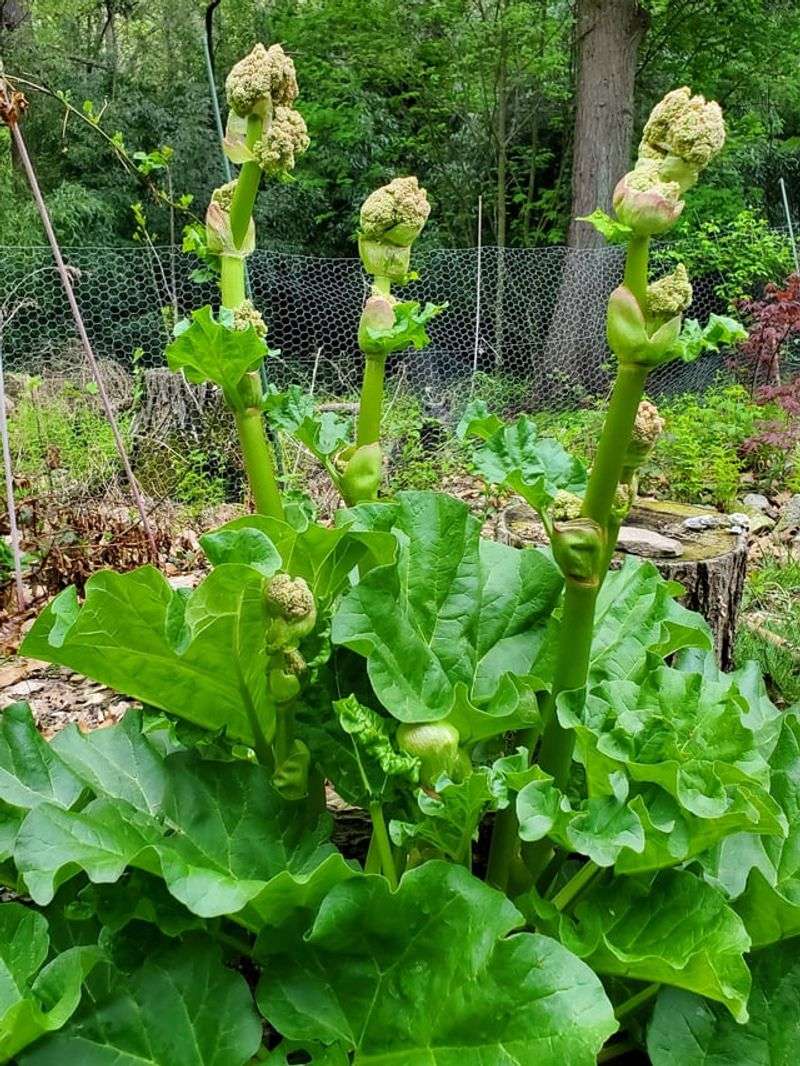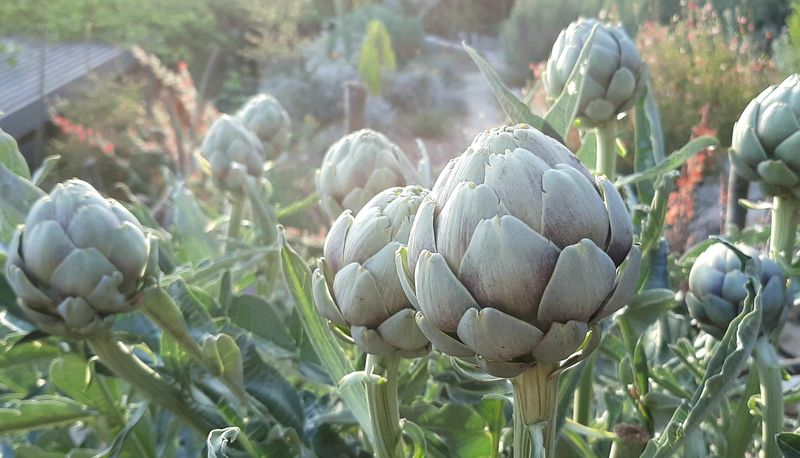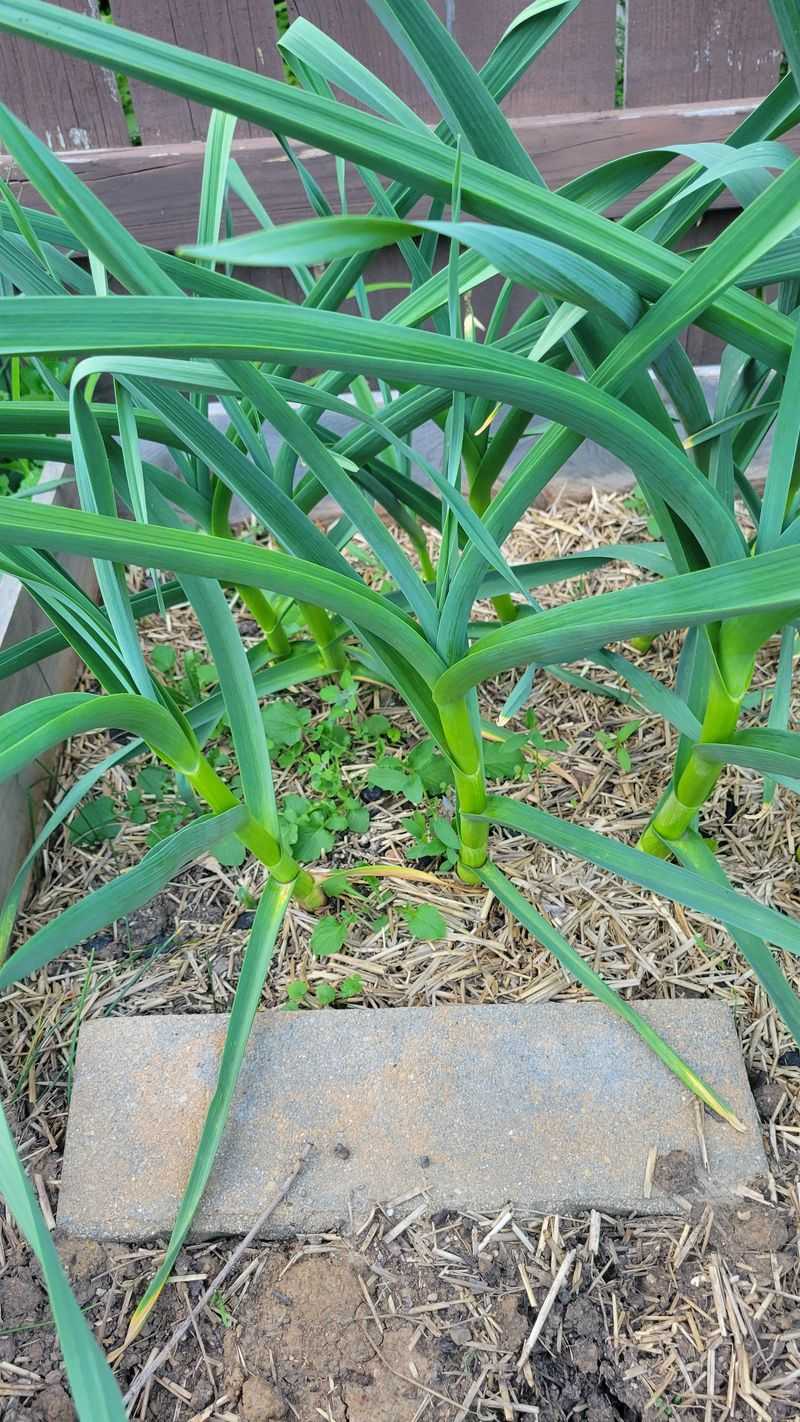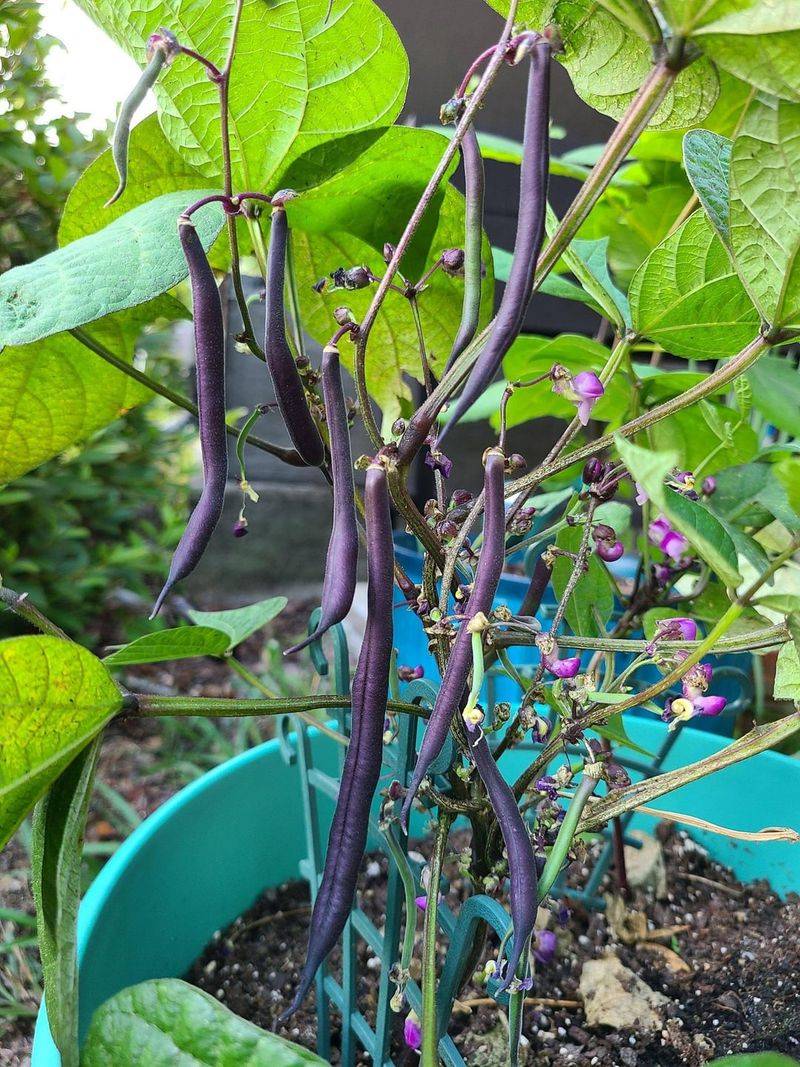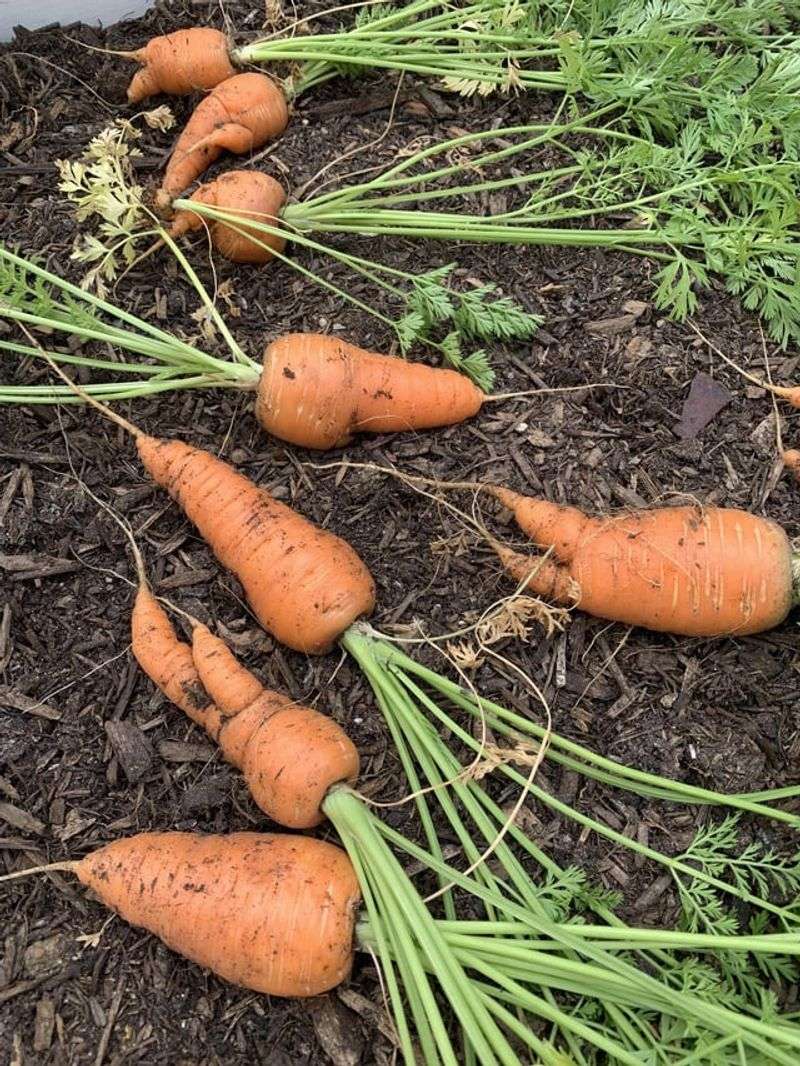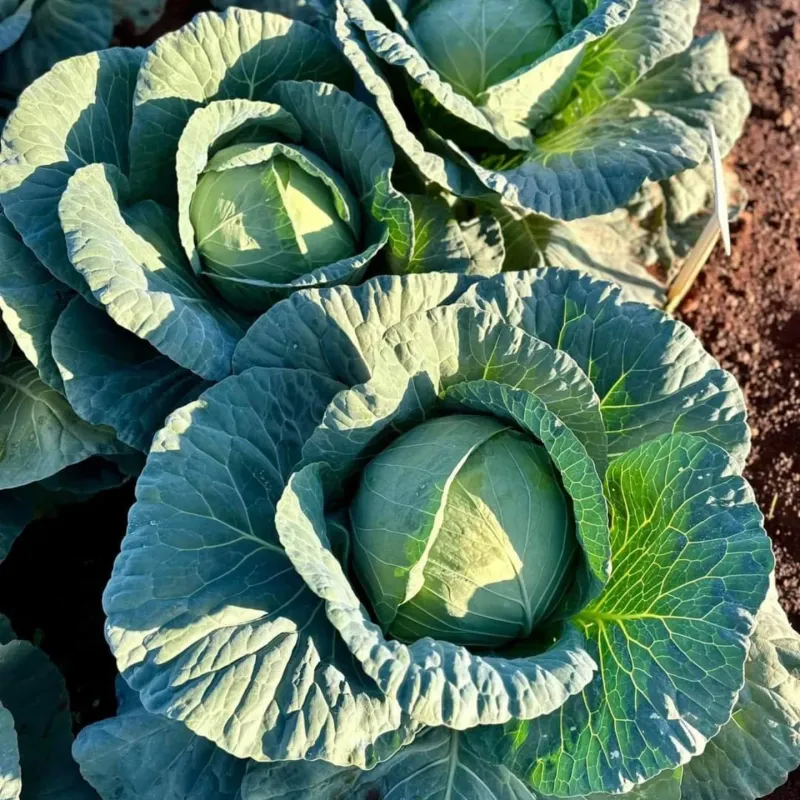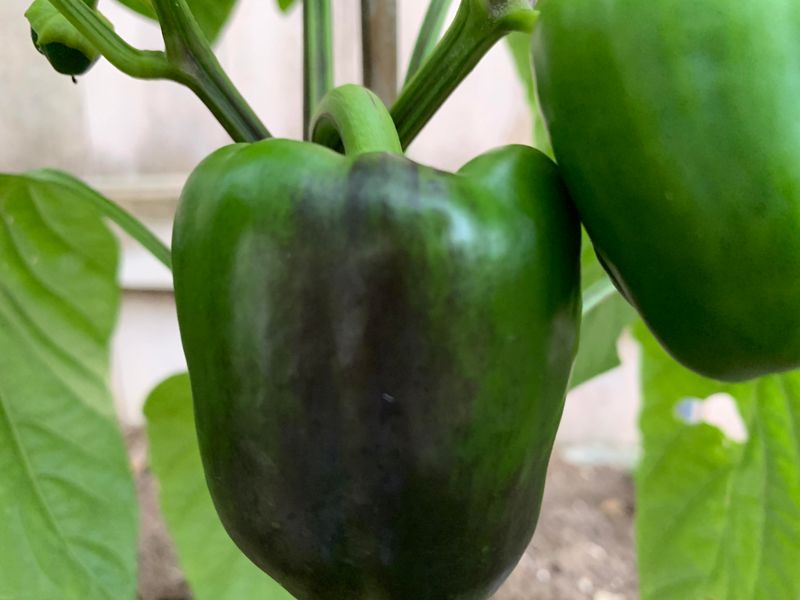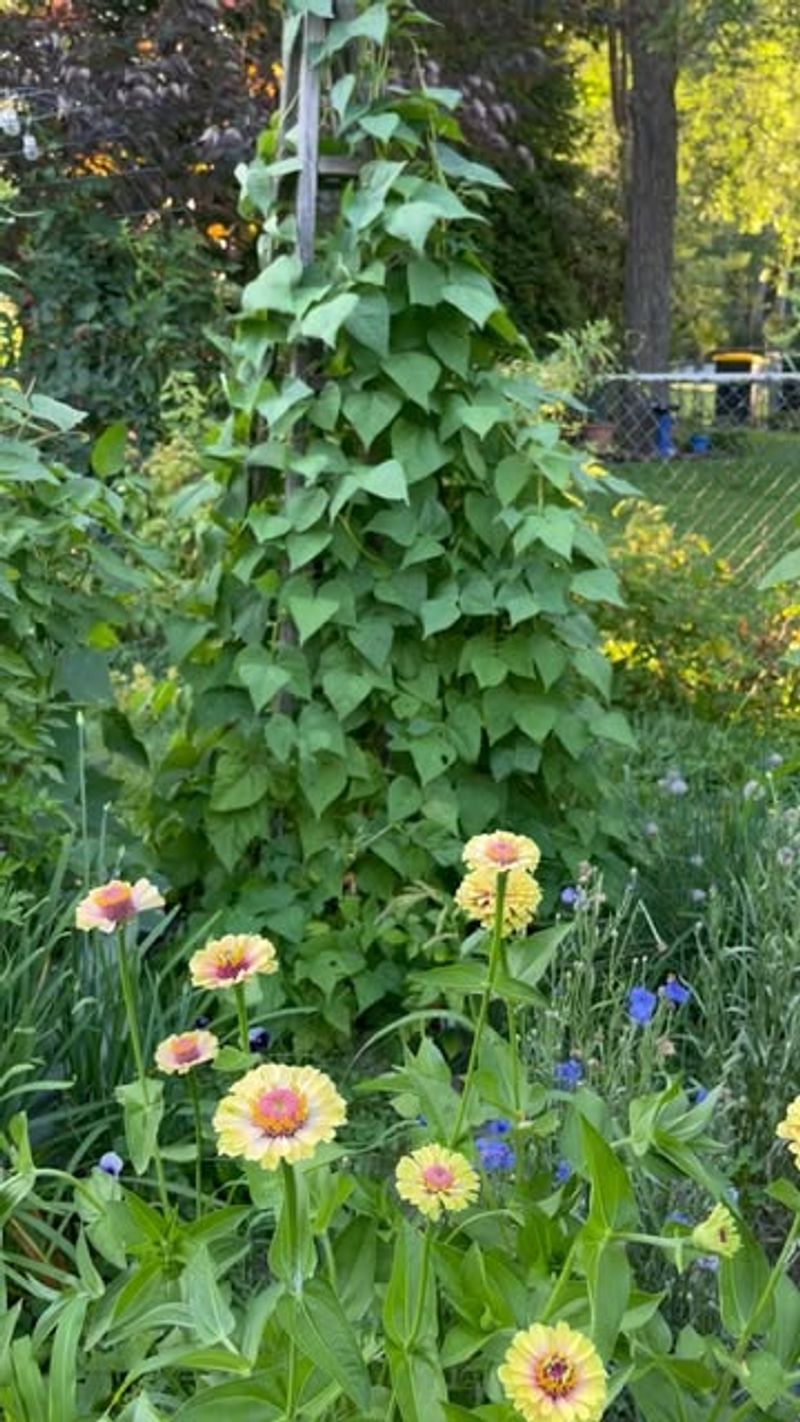Ever planted a veggie thinking it’d mind its manners—only to watch it take over like a leafy dictator? Some plants just can’t help themselves. With sprawling roots, rampant self-seeding, or towering vines, they can quickly crowd out everything else.
From underground runners to zucchini’s oversized leaves, these come with serious garden drama if left unchecked. They’re not bad—just a bit too enthusiastic. The trick is knowing what you’re getting into before they dig in.
If you’d rather keep the peace in your plot, there are gentler alternatives that know how to share. We’ll look at well-behaved veggies that stay compact, grow where they’re planted, and won’t turn your tidy bed into a jungle. Balance is possible—you just have to plant wisely.
1. Mint-Like Madness: Jerusalem Artichokes
These innocent-looking sunflower relatives hide a sinister secret underground. Their tubers spread aggressively, making them nearly impossible to fully remove once established.
A single forgotten tuber can regenerate an entire patch next season, and they’ll happily push out neighboring plants. Even careful harvesting won’t get every last piece.
Try growing them in dedicated raised beds with barriers, or plant in large containers to enjoy their nutty flavor without the garden takeover.
2. The Underground Network: Horseradish
Gardeners beware of this deceptively simple root vegetable! Horseradish establishes deep, persistent root systems that fragment easily, with each piece capable of growing into a new plant.
The spicy root vegetable might start contained, but quickly sends runners in all directions. Those fiery roots you love in sauce become garden enemies when they escape their bounds.
Consider growing it in a dedicated container at least 18 inches deep, or use root barriers sunk into the soil to prevent its underground spread.
3. Perpetual Producer: Swiss Chard
Swiss chard seems like a perfect vegetable with its colorful stems and nutritious leaves. The problem? It refuses to quit producing, sometimes for years on end.
Frost-tolerant and resilient, it often survives winter in milder climates, returning bigger and more vigorous each season. Seeds drop freely, creating volunteer plants throughout your garden beds.
Plant in designated areas where you can monitor its spread, and be diligent about removing flower stalks before they set seed to maintain control.
4. Multiplying Mystery: Egyptian Walking Onions
These peculiar alliums earn their name by literally “walking” across your garden. Instead of flowers, they produce topsets (bulbils) that weigh down the stalks until they touch ground and root.
Before you know it, you’ll have onions popping up everywhere! Their persistent nature means they’ll keep expanding their territory year after year, creating dense patches.
Harvest the topsets regularly before they can plant themselves, or grow them in raised beds with barriers to contain their wandering ways.
5. The Unstoppable Tuber: Potatoes
The humble potato seems innocent enough until you miss a few during harvest. Those overlooked tubers become next year’s volunteers, popping up in unexpected places throughout your garden.
Even tiny potatoes the size of marbles can survive winter and regrow with vigor. Their persistence makes crop rotation difficult and can spread soil-borne diseases.
Dig thoroughly at harvest time, and consider growing in containers or dedicated beds where you can monitor for escapees more effectively.
6. The Squash That Keeps On Giving: Zucchini
Anyone who’s grown zucchini knows the infamous summer squash abundance. One plant can produce enough for an entire neighborhood, and its rapid growth can overshadow nearby plants.
The real trouble starts when fruits hide beneath large leaves, growing to baseball bat proportions. Seeds from these monsters can remain viable in compost for years, leading to surprise plants.
Limit yourself to one or two plants, and check daily for harvesting during peak season to prevent the legendary zucchini takeover.
7. The Creeping Cucumber: Winter Squash
Winter squash varieties like butternut and acorn produce massive vines that can travel 15+ feet in all directions. Their tendrils grab onto anything in their path.
These garden giants quickly overwhelm smaller plants and climb fences, trellises, and even small trees. The heavy fruits can damage structures they climb on as they mature.
Grow these space-hoggers along garden edges where they can spill outward, or train them vertically on sturdy trellises designed to support their weight.
8. The Seedy Invader: Amaranth
Grown as both a grain and leafy vegetable, amaranth’s prolific seed production makes it a garden menace. A single plant can release over 100,000 seeds that remain viable for years.
Those pretty seed heads quickly turn from garden feature to persistent weed problem. The seeds germinate readily in disturbed soil, creating forests of volunteer plants.
Harvest before seed heads mature, or grow varieties bred to produce fewer viable seeds if you want to enjoy this nutritious vegetable without the takeover.
9. The Perennial Invader: Rhubarb
Rhubarb’s massive growth habit and persistence make it more garden bulldozer than well-behaved vegetable. Those giant leaves shade out neighboring plants while the expanding root crown takes up more space each year.
A single plant can grow to 4-5 feet wide over time. Once established, removing rhubarb completely often requires heavy digging and multiple attempts.
Give rhubarb its own dedicated corner of the garden where it won’t compete with annual vegetables, and divide crowns every 4-5 years to control size.
10. The Artful Dodger: Artichokes
Globe artichokes create stunning architectural plants that gradually form expanding perennial clumps. Their deep roots and spreading habit allow them to claim more territory each season.
Left unharvested, the flower buds open into massive purple thistles that release hundreds of fluffy seeds. These seeds travel impressive distances on the breeze, creating surprise artichoke plants throughout your yard.
Harvest all buds before they flower, and divide plants every 3-4 years to control their spread and maintain vigor.
11. The Stubborn Survivor: Sweet Potatoes
Sweet potatoes seem innocent until you discover their remarkable ability to regrow from the tiniest root pieces left behind. Their vigorous vines can grow a foot per week in warm weather!
Those beautiful trailing vines quickly smother neighboring plants and root wherever they touch soil. Even in cold climates, pieces of tuber can survive in protected spots to emerge next season.
Harvest with extreme care, digging wide around plants to capture all tubers, and consider growing in containers to limit their spreading potential.
12. The Persistent Bulb: Garlic
Garlic’s reputation as a well-behaved crop hides its sneaky persistence. Those tiny cloves that fall during planting or harvesting become next year’s volunteers, popping up in unexpected places.
The bulbils produced by hardneck varieties can create hundreds of tiny plants that mature into full bulbs over 2-3 years. These mini-invaders compete with other crops and can be difficult to eradicate.
Plant in dedicated beds with careful harvest practices, and remove any flowering scapes before they can form bulbils to prevent unwanted spread.
13. The Contained Alternative: Bush Beans
Unlike their invasive garden counterparts, bush beans grow in tidy, self-supporting plants that stay where you put them. Their compact growth habit makes them perfect for small spaces and organized gardens.
Most varieties mature quickly, allowing for succession planting in the same spot. The nitrogen-fixing roots actually improve soil quality for future crops instead of depleting it.
I’ve found bush beans to be remarkably well-behaved even when planted alongside more aggressive vegetables, maintaining their boundaries throughout the growing season.
14. The Well-Mannered Root: Carrots
Carrots grow straight down rather than spreading outward, making them ideal neighbors in mixed plantings. Their feathery foliage remains relatively compact above ground while roots develop below.
Unlike invasive root vegetables, carrots complete their lifecycle in a single season without leaving persistent parts behind. They’re also poor self-seeders compared to more aggressive garden vegetables.
These colorful roots have never caused trouble in my garden beds, staying exactly where planted until harvest time, with no surprise volunteers the following season.
15. The Predictable Producer: Cabbage
Cabbage forms single heads that grow in place without spreading runners or dropping excessive seeds. Their predictable growth pattern makes garden planning straightforward and reliable.
Once harvested, cabbage leaves no persistent roots behind to surprise you later. The entire plant can be removed cleanly, leaving space for your next crop.
Growing cabbage has taught me to appreciate vegetables that don’t require constant vigilance. They stay contained within their allotted space and finish their lifecycle without attempting garden domination.
16. The Space-Respecting: Bell Peppers
Bell peppers grow as compact bushes that respect boundaries and play well with neighbors. Their upright growth habit keeps them contained within a small footprint throughout the season.
Unlike sprawling vegetables, peppers don’t send out runners or drop seeds that readily germinate. The plants are easy to remove completely at season’s end without leaving persistent parts.
I particularly appreciate how peppers stay put in mixed plantings, allowing other vegetables to thrive nearby without competition or overcrowding.
17. The Cooperative Climber: Pole Beans on Trellis
While pole beans grow tall, they do so vertically when properly supported, taking up minimal ground space. Their climbing habit can actually save garden real estate compared to sprawling plants.
Unlike invasive spreaders, pole beans grow only where their support system allows. When trellised, they create an attractive vertical element without overwhelming neighboring plants.
My garden has benefited from their space-efficient growth and soil-improving properties. Once the season ends, the entire plant removes easily with no persistent roots or volunteer seedlings the following year.

